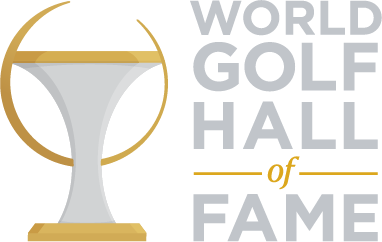Author Peter May is no stranger to the world of sports. The long-time reporter and currently a Senior Lecturer in Journalism at Brandeis University is the author of The Big Three: Larry Bird, Kevin McHale and Robert Parish: The Best Frontcourt in the History of Basketball, The Last Banner: The Story of the 1985-86 Boston Celtics, the NBA’s Greatest Team of All-Time, and Top of the World: The Inside Story of the Boston Celtics’ 2007-2008 Championship Season.
May recently dipped his toe into the world of golf, however, to take a closer look at the Hale America National Open of 1942, one of the most hotly debated golf tournaments of the 20th century. The tournament, played in place of the U.S. Open when the USGA decided not to hold the annual tournament due to the country’s entry into World War II, was won by Ben Hogan, who believed until the day he died that he had won a legitimate contesting of a U.S. Open. This would have given him five for his career, instead of four, which would put him in sole-possession of the most U.S. Open wins in history, eclipsing Willie Anderson, Bobby Jones, and Jack Nicklaus.
May’s new book, The Open Question: Ben Hogan and Golf’s Most Enduring Controversy, recently went on sale and he graciously agreed to answer a few questions via e-mail from our curator Travis Puterbaugh about the book and address some of the information he uncovered while conducting his research.
Q. What was your inspiration for writing a book about the 1942 Hale America National Open?
A. I never knew about the tournament. I discovered it by accident when I read a tweet from Dan Jenkins during the 2017 U.S. Open which mentioned Hogan’s 62 and how it was the lowest score in a U.S. Open. I had no idea what he was talking about. So I decided to investigate. I figured if I was in the dark about this tournament and controversy, so were a lot of other golf fans. I was right.
Q. Your book focuses on some of golf’s dominant figures and personalities during the 1940s: Hogan, Jimmy Demaret, Lloyd Mangrum. Other than all being from Texas, what did you find that those three Hall of Famers most shared in common?
A. They were all pretty much self-taught and a product of their times. None graduated from high school. None was raised in what we today might call a comfortable home environment. While their personalities were different, they all shared an inner fire to succeed on what was then a PGA Tour that wasn’t all that lucrative.
Q. Given the climate in our country when the decision was made by the USGA to not hold a U.S. Open in 1942 – the United States had just been officially drawn into World War II – do you think it was a prudent decision by the USGA or one made in haste compared to the PGA of America and sports leagues such as Major League Baseball which continued as normal?
A. It’s hard to fault the USGA for its decision. It made a similar one in 1917. But the PGA Tour went on and the Masters and the PGA Championship were both held in 1942, albeit in constricted conditions. Golf did carry on in 1942. Back then, the USGA ran only one professional tournament so its move meant one week of the schedule was off. Enter the Hale America.
Q. USGA Executive Secretary Joseph C. Dey, Jr., stated that “the tournament will not be a championship… but rather, the Hale America Open will be a patriotic demonstration similar to an open patriotic tournament held by the USGA in 1917, but on a much wider basis.” Qualifiers were held, just as they are normally done for U.S. Opens, but it was a different kind of field. What were some of the ways, subtle or more overt, that this was not a traditional U.S. Open?
A. I think the USGA assumed at first that the Hale America it proposed would look a lot different than the one that actually took place. The field turned out to be stellar. At the time, U.S. Opens were contested over three days. The Hale America was contested over four days, which made sense in that the extra day would mean extra money. There were some side competitions (longest drive competition) that the USGA cites as reasons for the Hale America not being a legitimate U.S. Open. But the main reason the USGA continues to cite is that the site, Ridgemoor Country Club, was not deemed to be a legitimate U.S. Open venue.
Q. In the book you detail the conflicting accounts of Lloyd Mangrum’s service record during World War II. To what do you attribute the inaccuracies that seem to have evolved over the last 75 years surrounding his war record?
A. I think something gets said, repeated, and eventually becomes the real story. We know Mangrum served honorably in the ETO (European Theater of Operations). We also know, from military records, that he was not at D-Day or the Battle of the Bulge, which golf writers over the decades have said that he was. My own opinion is that no one bothered to check the records. The sources were always newspaper articles and/or magazine pieces. And it was a great story to have this decorated war hero come back and win the first U.S. Open held after World War II.
Q. You challenge the idea that the best argument against viewing the 1942 Hale America National Open as a “U.S. Open” were the low scores that were recorded on the Ridgemoor course through the first two rounds, including Ben Hogan’s 62, and his 17-under, 271 overall. The course, through not fault of its own, was not designed or set up the way the USGA traditionally sets up a U.S. Open course, as pointed out by Dey. Everyone, however, played the course under the same conditions. Do you think there is too much emphasis put on having a “diabolical” course be an important metric in determining the validity of a national open?
A. I do. Absolutely. What you want out of a tournament like that is to produce a quality and deserving champion. Hogan was that. The “easiness” of the course might have been true at the time, but so what? Do we disqualify Koepka because Erin Hills was easy? No.
Q. Why do you think that the 62 Ben Hogan shot in the 2nd round of the tournament has been relegated to the dustbin of golf history? Dan Jenkins, as you say, does not even make a passing reference to it in his Sports Illustrated article about the 1973 U.S. Open, when Johnny Miller shot a historic 63 in the final round.
A. I found that to be a little strange to be honest. The unquestioned champion of Hogan winning five U.S. Opens doesn’t even parenthetically mention it? Now, Sports Illustrated was and still is an editor’s magazine, not a writer’s magazine, so he could have written something and had it removed in the editing process. But he mentioned it in his books.
Q. The stories about Bobby Jones and his service during World War II are fascinating, and it seems like a movie should have been just based on those years alone. What was the most interesting thing you learned when researching his war experiences?
A. What we don’t know. From photographs, we know he was in Normandy shortly after D-Day. But, again, due to the lack of records, it’s difficult to pinpoint when he was there. His grandson emphatically stated Jones landed on June 7. That was a very different scene than June 6. I guess what interested me the most is how insistent he was about getting sent overseas and then once he got there, he requested to muster out six weeks later. He was smart enough to recognize that whatever talents he brought to a particular situation may have no longer been in demand. And he also was 42 years old with three children at home. Realistically, he should have never been allowed to go overseas in the first place. But how do you say no to Bobby Jones?
Q. The USGA’s statement in 2020 regarding the Hale America National Open has what you call “inconsistencies or convenient omissions.” What do you believe are the most egregious of those?
A. By far it’s the supposed lack of a quality field. Every major golfer of the era, except Sam Snead, was at the Hale America (In researching this, it’s unclear if Snead decided not to play or if the U.S. Navy prevented him from playing. And what if he had won it? As he never won an official U.S. Open, he might have gone to bat for the Hale America!). The event was run like a U.S. Open by the organization that runs the U.S. Open. Its winner got a medal that was nearly identical to the medal given the regular U.S. Open winners. It was presented by the president of the USGA. And the Hale America was a one-off. There was nothing like it during the remainder of the war, which, in my thinking, elevates it to U.S. Open consideration.
Q. Lastly, in the book you mention that the person you would most like to have a beer with is Jimmy Demaret. What is the most interesting story you learned about him while researching the book?
A. Just how disarming and self-deprecating he was. Everyone seemed to love Jimmy Demaret and he seemed to love everyone. Yes, he might have won a few more Majors had he had Hogan’s focus, but then he wouldn’t have been Demaret. I just don’t think he took himself too seriously. I loved his story about deliberately hitting balls out of bounds into an orange grove so the players could pack their bags with oranges, which was a major food source for them. And his line about golf and sex being the only two things you can be bad at and still enjoy is a classic.

